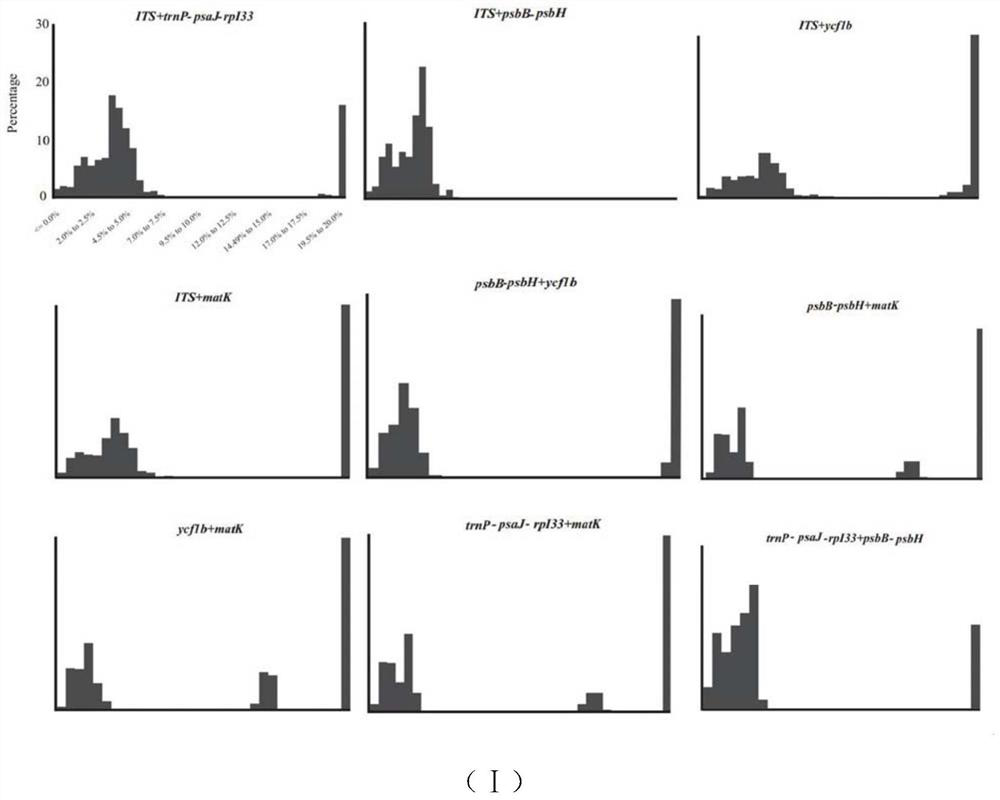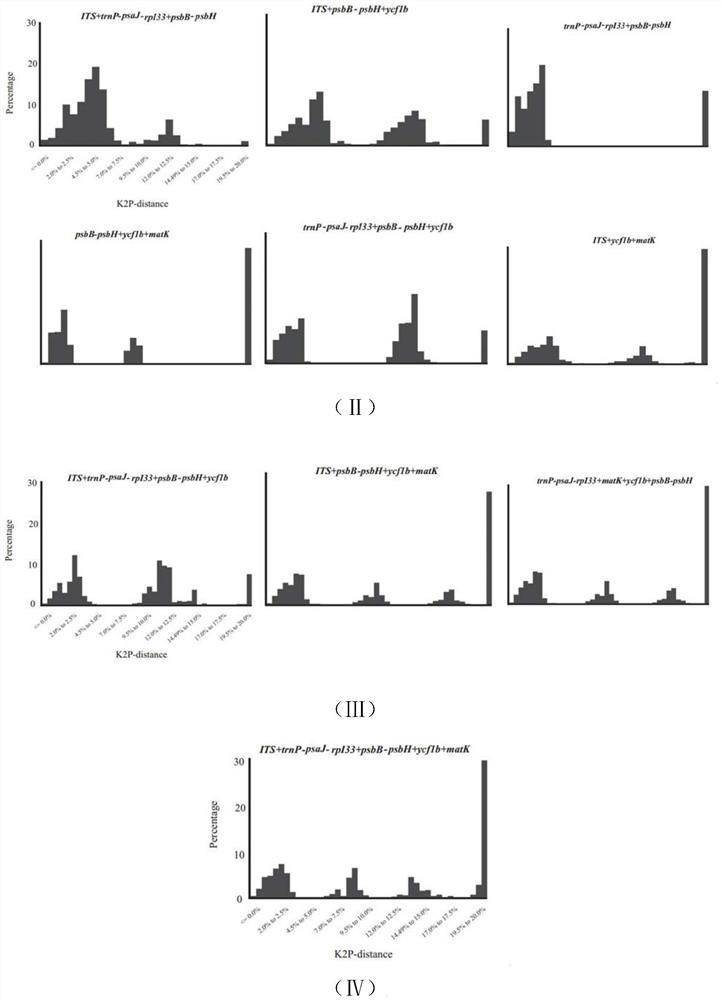DNA bar code for identifying lilium plants and application thereof
A barcode, Lilium technology, applied in the field of molecular biology, achieves good stability, high repeatability, and accurate identification
- Summary
- Abstract
- Description
- Claims
- Application Information
AI Technical Summary
Problems solved by technology
Method used
Image
Examples
Embodiment Construction
[0035] A DNA barcode for identification of Lilium plants, spliced from three gene fragments trnP-psaJ-rpI33, psbB-psbH and ITS, used to obtain primers for DNA barcodes, including: used to amplify trnP-psaJ- The nucleotide sequence of the primer pair of rpI33 is as shown in SEQ ID NO:1 and SEQ ID NO:2 in the sequence listing, and the nucleotide sequence of the primer pair for amplifying psbB-psbH is as SEQ ID NO in the sequence listing: 3 and SEQ ID NO: 4, the nucleotide sequence of the primer pair for amplifying ITS is shown in SEQ ID NO: 5 and SEQ ID NO: 6 in the sequence listing.
[0036] Application of the DNA barcode of the present invention in identifying plants of the genus Lilium.
[0037] The method for identifying plants of the genus Lilium using the DNA barcode of the present invention comprises the following steps:
[0038] (1) Extract the DNA of unknown wild lily plants; the samples to be tested include fresh or dry samples of leaves, scales, and petals of Liliu...
PUM
 Login to View More
Login to View More Abstract
Description
Claims
Application Information
 Login to View More
Login to View More - R&D Engineer
- R&D Manager
- IP Professional
- Industry Leading Data Capabilities
- Powerful AI technology
- Patent DNA Extraction
Browse by: Latest US Patents, China's latest patents, Technical Efficacy Thesaurus, Application Domain, Technology Topic, Popular Technical Reports.
© 2024 PatSnap. All rights reserved.Legal|Privacy policy|Modern Slavery Act Transparency Statement|Sitemap|About US| Contact US: help@patsnap.com










